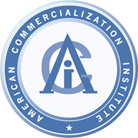 |
High Paying
US Jobs, Economic
Empowerment
&
Revitalization
of
States through Federal Power |
"Critical Field"
Technology Innovation
&
Maximized Profits on
R&D and Investments |
Prevention of Biochemical
and Nuclear Proliferation
&
Homeland Security
Technologies |
Aqueous-Froth Filter
The aqueous-froth method of air filtration is an entirely new way to filter
the air. Indeed, the aqueous-froth filter is a paradigm shift in air filtration
that offers opportunities to solve a wide variety of problems with an exciting
new approach. The aqueous-froth filter is based on simple physics. Contaminated
air is drawn into a container partially filled with water. The air stream
expands the surface area of the water and forms an aqueous-froth of millions of
tiny bubbles. The surface area of the bubbles, inside and out, serves as the
primary sub-micron filtering elements. Additives to the water reservoir can
sterilize dangerous bio-aerosols or neutralize reactive chemicals. The method
provides sub-micron filtration, exceeding current HEPA (High Efficiency
Particulate Air) standards, and holds the bio-chemical contaminants in a
neutralizing solution for safe disposal. The method maintains peak performance,
is energy efficient, cost effective, and scalable in size from a portable vacuum
device to high-rise building-sized HVAC systems. The filter is designed to
filter contaminants nanometer-sized and smaller.
This new method of air filtration presents a wide array of new opportunities
in numerous industries.
Advantages of the method:
1 The simple design has no moving parts.
2 It produces sub-micron filtration not possible with any other method.
3 It removes wet and dry contaminants from the air.
4 The filtering surface is self-cleaning. The contaminants are deposited into
the liquid reservoir continuously by gravity.
5 Unlike current HEPA filtration methods that use paper filters, there is
little airflow resistance. As a result, the aqueous-froth filter is more energy
efficient.
6 Since the filter is self-cleaning, it remains at peak performance over
time.
7 Additives can be introduced to the water reservoir to enhance froth
formation, sterilize bio-aerosols, and neutralize reactive chemicals, including
poison gases.
8 The filter design holds the contaminants in a liquid reservoir for safe
containment and disposal.
9 Instead of potentially hazardous “bag-in-bag-out” maintenance of
current designs, maintenance of the aqueous-froth filter can be automated in
permanent installations by automatic, metered release of the liquid reservoir
into the existing wastewater treatment system.
10 The filter is inexpensive to manufacture, install, operate, and maintain.
11 It can be sized to fit every need from a portable vacuum device to a
high-rise, building sized HVAC system.
